Site Selection Explained: Your Essential Primer on Location Strategy
Why Site Selection Is the Foundation of Business Success
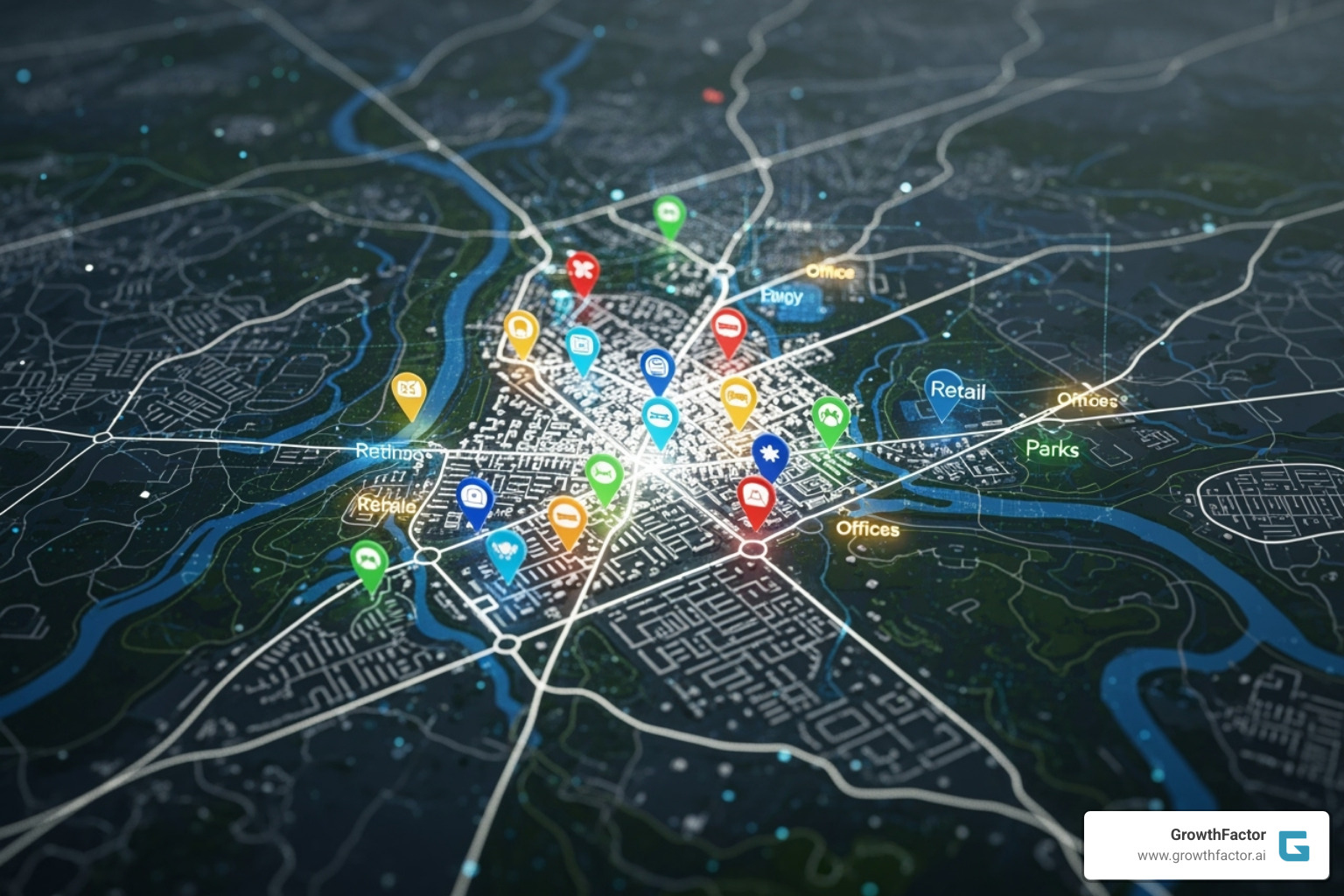
What is site selection? Site selection is the strategic process of identifying, evaluating, and choosing the optimal location for a new business facility or expansion. This process combines data analysis, market research, and strategic planning to maximize efficiency, customer reach, and profitability.
Quick Answer: Site Selection Essentials
- Definition: Strategic process of choosing optimal business locations
- Purpose: Maximize profitability, accessibility, and operational success
- Timeline: Typically 4-6 months for private sector projects
- Key Players: Project teams, consultants, economic development agencies
- Success Factors: Labor force, infrastructure, market access, real estate costs
- Industries: Retail, manufacturing, corporate headquarters, data centers
Site selection has evolved from an intuitive practice to a sophisticated, tech-driven discipline. What began as government projects in the 1940s, like selecting Los Alamos, is now essential for businesses seeking a competitive edge through strategic location.
The stakes couldn't be higher. As one industry expert notes, "Few corporate decisions have as many immediate and long-term implications on tax structure, cost of goods sold, supply chain, labor force, and overall operating success as the choice of location." A well-executed process can drive millions in profit, while a poor one can lead to failure.
Yet many retail chains use outdated, manual processes that slow expansion. Evaluating sites one-by-one with spreadsheets and gut instinct can't keep pace with today's fast-moving markets.
I'm Clyde Christian Anderson, CEO of GrowthFactor.ai. With over a decade in retail real estate, from stocking shelves to corporate boardrooms, I understand what is site selection from the ground up. This perspective shapes how I help retailers make smarter, faster location decisions.
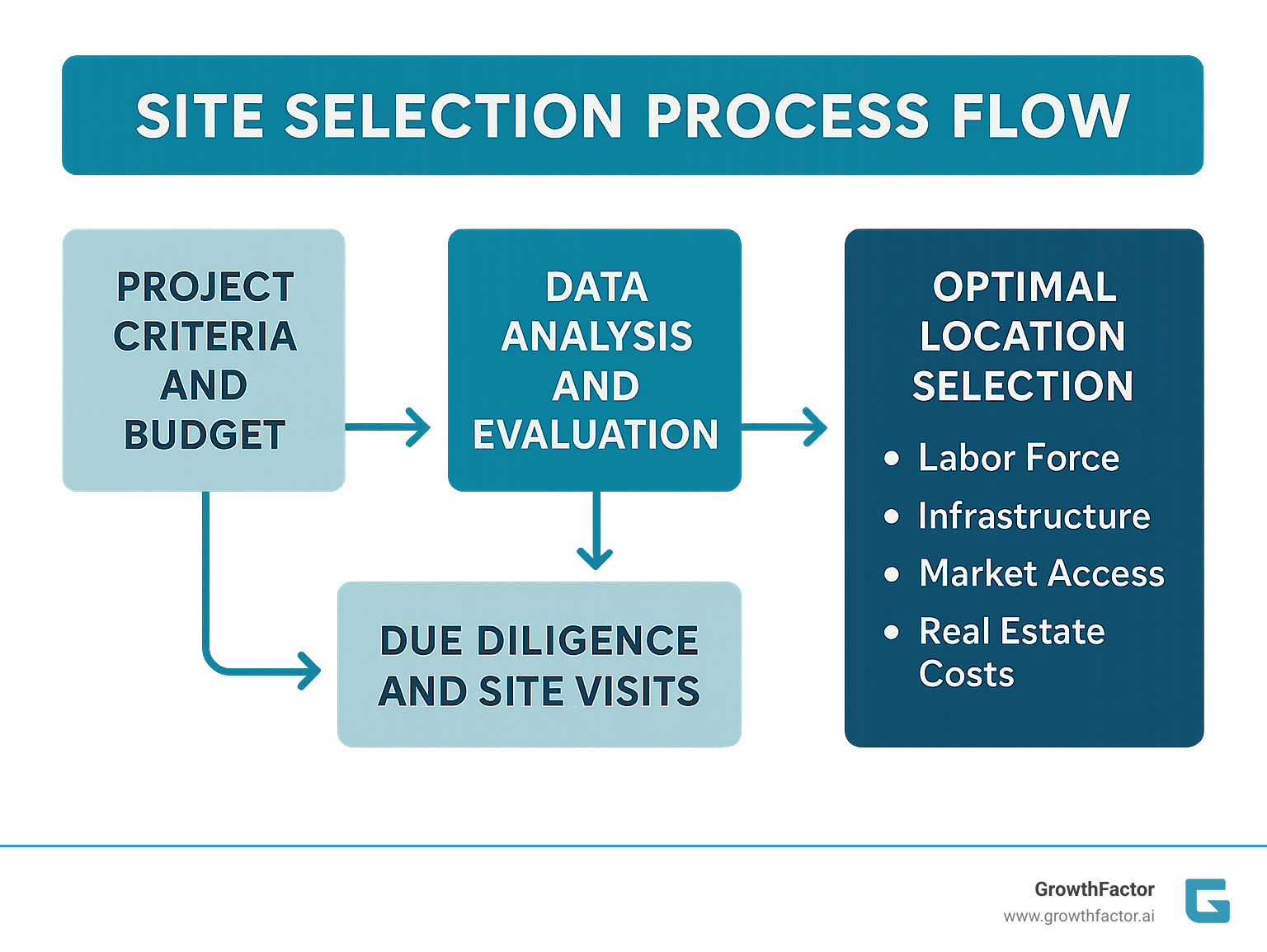
Basic what is site selection terms:
The Evolution of Site Selection: From Government Projects to Global Business Strategy
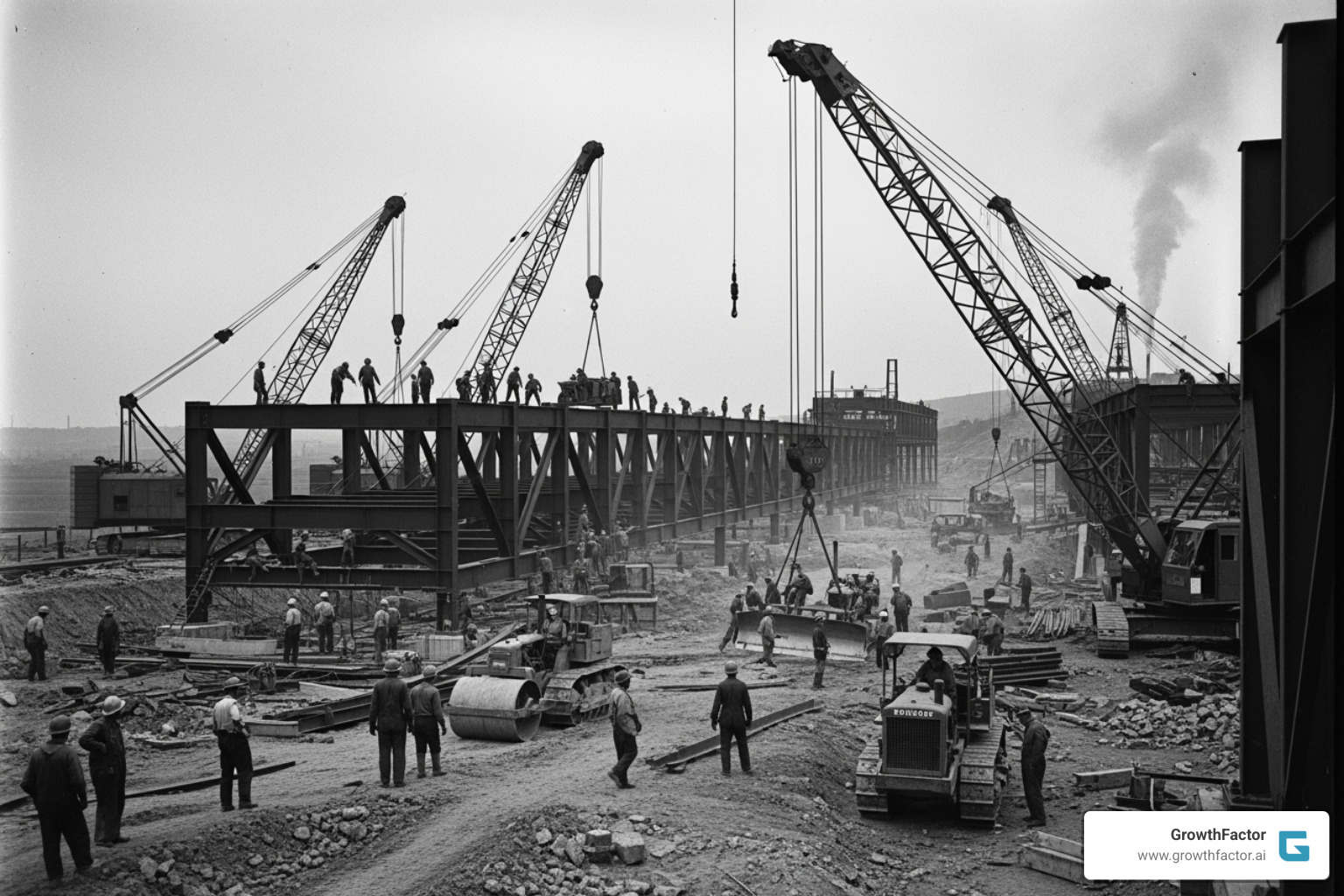
Understanding what is site selection today means looking back at its origins. While modern businesses use AI and analytics, the formal practice began in government war rooms. During WWII, the U.S. government faced the challenge of building top-secret facilities. Site selection was formalized in the 1940s and 1950s out of necessity for projects like the Manhattan Project's Los Alamos lab and the Hanford Site for nuclear production.
These weren't casual decisions. The U.S. Air Force evaluated over 580 sites for its new academy, marking a shift from gut feelings to data-driven criteria. Academic pioneers like Edgar M. Hoover (1948) laid the groundwork, and later researchers expanded the discipline to international trade and site selection principles. In the 1990s, multi-staged processes were developed for a globalized economy, turning a government necessity into an essential business strategy.
The private sector quickly adopted formalized site selection, realizing location decisions could make or break their success. A prime example is BMW's three-year site search in the early 1990s, where they methodically evaluated over 250 sites before choosing South Carolina.
This shift to data-driven decisions has accelerated. Today's process uses real-time data, advanced software, and AI analytics. The complexity of the global economy has made site selection a highly technical discipline. What began as a wartime necessity is now a critical business decision—a strategic choice that determines long-term success.
The Anatomy of a Winning Site Selection Process

Understanding what is site selection means seeing it as a carefully orchestrated journey, not a single decision. A successful process takes four to six months for private sector projects, but smart businesses start at least 18 months before breaking ground to allow for thorough evaluation and negotiation.
Phase 1: Strategy and Criteria Definition
A successful project starts with the right team. Assemble representatives from human resources, real estate, operations, supply chain, finance, communications, government relations, legal, and tax departments. Each brings essential expertise that prevents costly oversights. Once the team is assembled, define the project's purpose and goals, establish your budget and capital investment, and project your headcount. Also, identify your key criteria and consider your future expansion needs from the start.
Phase 2: Geographic Screening and Analysis
This phase involves a broad market search and data collection where modern technology shines. Using GIS mapping and location intelligence tools, you can analyze demographics, foot traffic, competitor locations, and migration trends. This data-driven approach helps filter hundreds of potential areas down to a manageable long list of five to ten communities. AI-powered platforms are invaluable here, automating the initial qualification process so teams can evaluate more sites than traditional methods allow. For more on this, see More on Data-Driven Site Selection.
Phase 3: In-Depth Evaluation and Due Diligence
Now, you'll narrow your long list to two or three finalist sites. This phase combines hard data with on-the-ground investigation. On-site visits are critical. Data can't replace walking a site, feeling out the community, and meeting local leaders. You might find deal-breakers not found in spreadsheets. The due diligence process requires thorough zoning regulation reviews, environmental assessments, and geotechnical surveys. Don't forget utility access—a common oversight. This evaluation helps spot problems while you still have options. For more details, our guide on Real Estate Site Selection dives deeper.
Phase 4: Negotiation and Final Selection
In the final phase, your planning pays off. You'll juggle real estate negotiations and economic incentive discussions simultaneously. You'll work to secure favorable purchase or lease terms while engaging with economic development agencies to negotiate incentives like tax abatements, grants, or training subsidies. Carefully manage these negotiations to maximize leverage. Ensure real estate commitments don't conflict with incentive requirements to avoid losing benefits. Once terms are agreed upon, you move to site acquisition and development planning. Plan for economic incentive compliance from day one to ensure you don't leave money on the table.
What is Site Selection's Core Focus? Key Factors and Industry-Specific Considerations
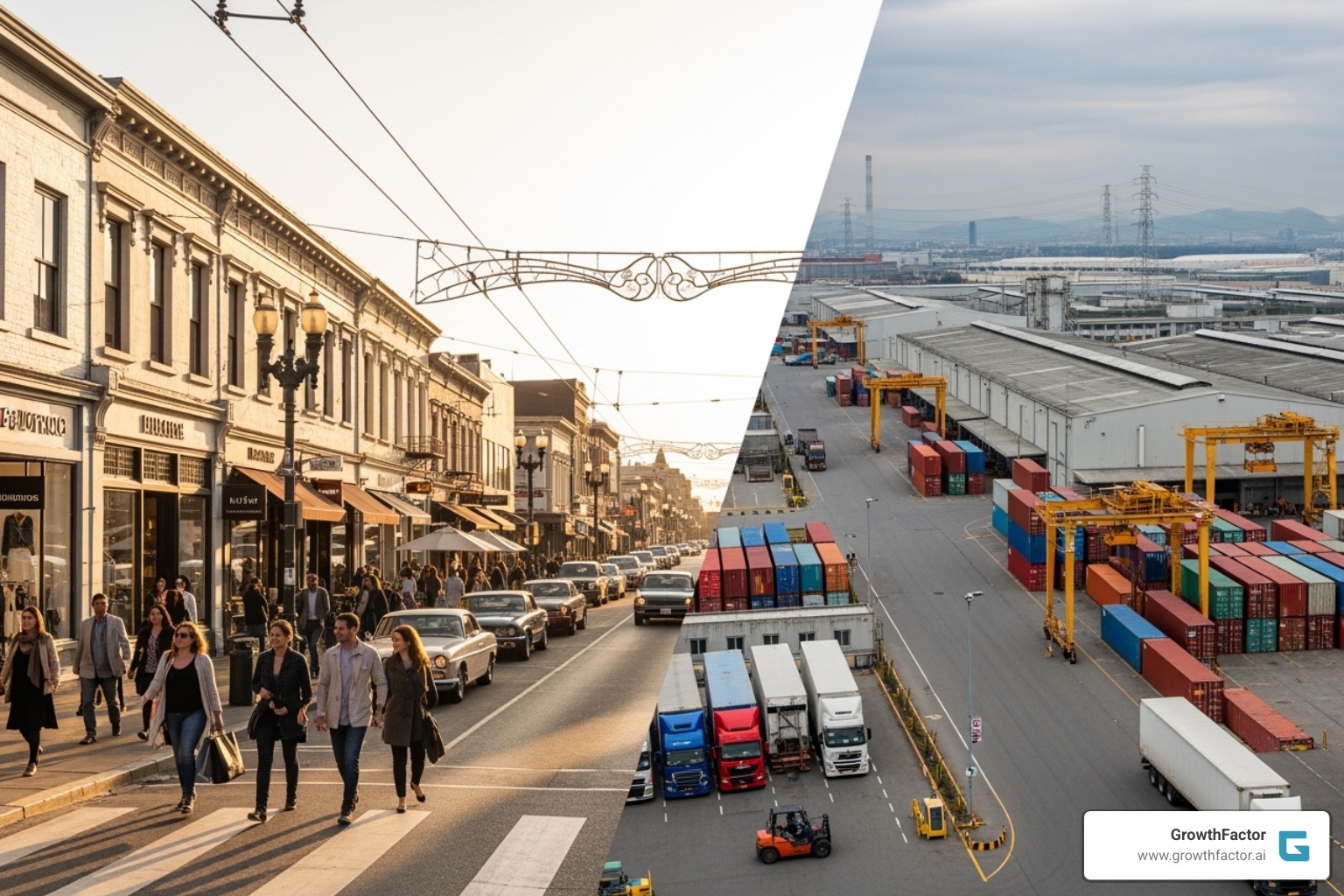
At its heart, what is site selection is about matching your project's needs with a location's strengths—finding the ideal home for your business. A successful approach uses a balanced scorecard, weighing hard data (like traffic counts) and soft insights (like community culture) to find the sweet spot between quantitative analysis and real-world understanding.
Evaluating the Core Criteria
While every project is unique, several core criteria form the foundation of any good location analysis.
Labor force analysis examines the availability, cost, and stability of skilled workers.
Logistics and infrastructure cover the movement of goods and people via highways, rail, or airports, plus utility availability like power and internet.
Demographics and market access help you understand population trends, income levels, and proximity to target customers or talent.
Business climate and regulatory environment includes factors like permitting processes and tax structures.
Real estate costs and availability impact the bottom line and include finding suitable properties with room for future expansion.
Quality of life is increasingly important for attracting and retaining top talent, encompassing schools, housing, and healthcare.
How Site Selection Varies by Industry
Site selection priorities vary significantly by industry. What's crucial for a restaurant may be irrelevant to a manufacturing plant.
Retail and restaurants live and die by customer access, making high foot traffic, visibility, and the right demographics non-negotiable. Analysis includes competitor locations, cannibalization risk, and parking. Our Retail Site Selection Process explores these nuances.
Manufacturing and distribution focus on supply chain efficiency, proximity to raw materials, robust utility infrastructure (especially power), and access to transportation networks like rail and highways.
Corporate headquarters decisions revolve around talent attraction. This means excellent airport access, a thriving business ecosystem, and amenities that improve brand image and employee satisfaction.
Data centers have specialized needs, including uninterrupted, cost-effective power, high-speed fiber connectivity, a climate suitable for cooling, and top-tier security.
Understanding these industry-specific nuances is what separates successful site selection from expensive mistakes.
The Modern Toolkit: Overcoming Challenges with Data and AI
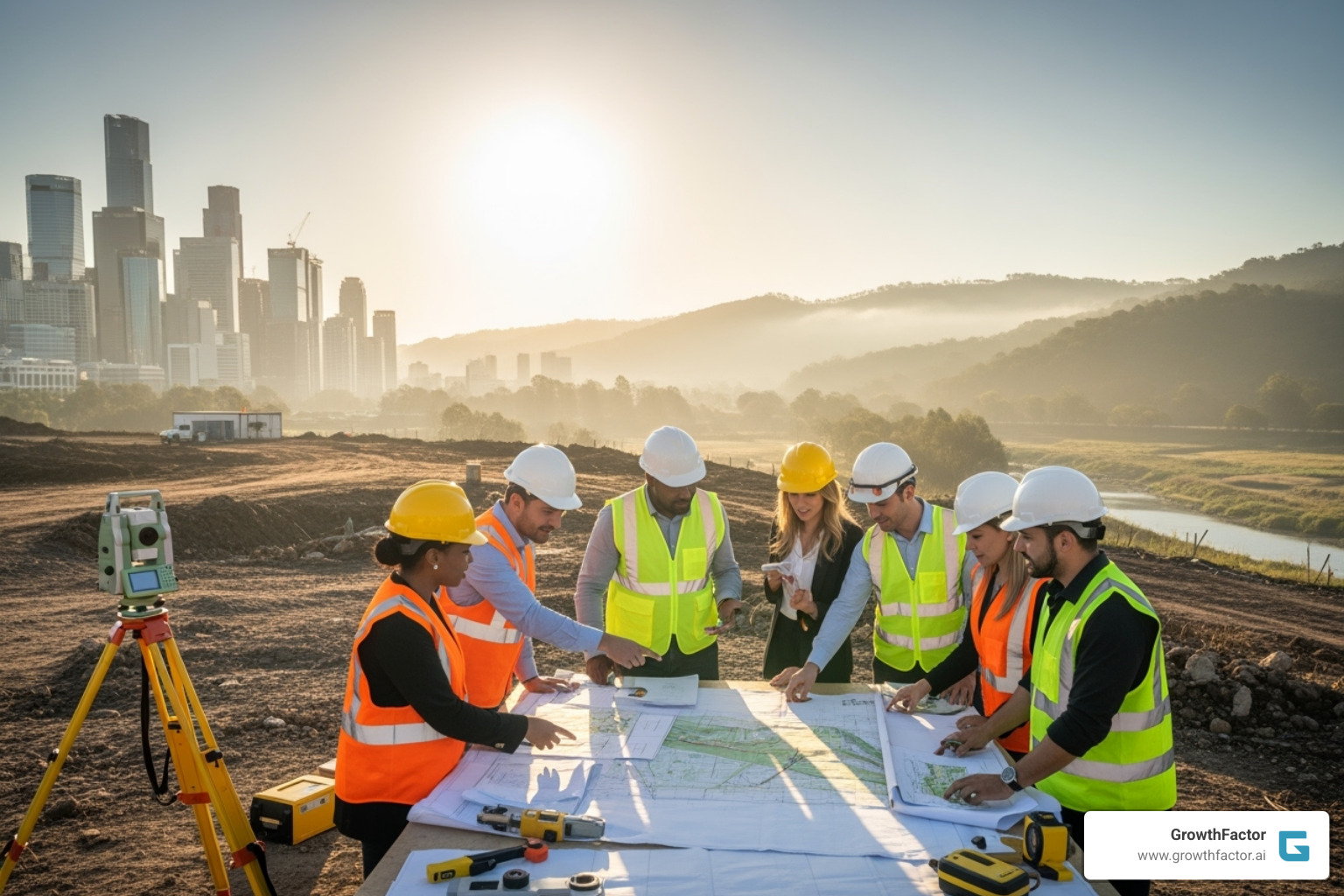
Site selection can be overwhelming due to unreliable data, information overload, and analysis challenges. Many teams get stuck in "spreadsheet purgatory," manually crunching numbers. Unpredictable market shifts, tight labor markets, and changing regulations add to the complexity. However, the right tools can turn these challenges into advantages.
Essential Tools and Resources
Modern site selection uses a powerful toolkit to bring clarity. Location intelligence platforms are the backbone, combining demographics, foot traffic, and competitor data into actionable insights. They work with demographic databases to reveal population and consumer trends. Other key resources include economic development agencies, real estate listings, labor market information, market research firms, visualization tools, and experienced site selection consultants.
How AI is Revolutionizing the Process
AI is making the traditionally tedious site selection process faster and more accurate.
Predictive analytics can now forecast sales, foot traffic, and market demand with remarkable precision, moving beyond gut feelings.
Automated site qualification is a game-changer. Our AI Agent Waldo can quickly evaluate hundreds of sites against your criteria, freeing your team to focus on the most promising opportunities.
The ability to analyze vast datasets efficiently means we can consider factors previously impossible to track, like mobile foot traffic and social media sentiment.
Crucially, AI helps mitigate human bias by providing objective, data-driven recommendations, evaluating locations based purely on criteria.
The result is that teams can evaluate 5x more sites than with traditional methods, increasing the chance of finding the perfect location while reducing time and effort. We've helped clients End the Era of Spreadsheet Purgatory: How AI is Revolutionizing Retail Site Selection.
Whether you're just starting your expansion journey or managing dozens of locations, we offer three plans to fit your needs: Core ($500), Growth ($1,500), and Enterprise plans. Each provides scalable solutions designed to transform how you approach site selection.
Frequently Asked Questions about Site Selection
Here are answers to the most common questions about what is site selection really involves.
How early should the site selection process begin?
You need to start much earlier than you think. The process should ideally begin at least 18 months before you want to break ground. This extended timeline is necessary for detailed analysis, community engagement, due diligence, permitting, and incentive negotiations. Compressing this timeline often leads to costly mistakes. Starting early allows for thoughtful, not desperate, decisions.
What is the difference between a greenfield and a brownfield site?
A greenfield site is a blank canvas—undeveloped land, often in suburban or rural areas, with no existing infrastructure. This offers complete design control but may require significant investment in new roads and utilities.
A brownfield site is previously developed property that is now vacant or underused, often in established urban locations. It may have existing infrastructure, but the catch is that it might require environmental remediation to clean up contamination from previous use, adding cost and complexity.
What is the most important factor in site selection?
The honest answer is that there is no single "most important" factor. The reality of what is site selection is nuanced. The critical criteria depend entirely on your project's goals, industry, and operational needs. For a retail store, it might be customer traffic; for a manufacturing plant, logistics and labor costs. A successful strategy involves prioritizing and balancing multiple factors based on your specific business objectives.
This is why our AI Agent Waldo is so valuable. It helps you systematically evaluate what matters most for your specific situation, allowing you to focus on the criteria that will drive your success.
Conclusion: Securing Your Future with Strategic Site Selection
Understanding what is site selection is more than an academic exercise; it's the foundation for your business's long-term success. A strong location strategy secures a competitive advantage that compounds over time. The benefits ripple through your business: improved profitability from optimized costs and market reach, a stronger brand presence, and mitigated long-term risks like demographic shifts or regulatory issues. A great location works for you 24/7.
The future of site selection is here, powered by AI and sophisticated data analytics. The days of gut feelings and spreadsheets are fading. Tomorrow's winners will be businesses that use tools capable of processing vast data, predicting market behavior, and automating time-consuming evaluations. This is about using AI and data to make smarter, faster decisions. While competitors are stuck in manual analysis, you can evaluate five times more sites with greater accuracy.
Ready to transform your approach to finding the perfect spot? Platforms like GrowthFactor provide the AI-powered tools you need to make faster, more informed location decisions. Our AI Agent Waldo specializes in retail site selection and report building, helping you identify white space opportunities and grow your brand with confidence.
Find Waldo, the AI Agent for Retail Site Selection and Report Building, and find how the right technology can turn location selection from a stressful guessing game into your secret weapon for growth.
Citations
The human algorithm
Ready to see what we're cooking?
Submit your information below and we'll be in touch to schedule.


